- Liliaceae
- Lamiaceae
- Euphorbiaceae
- Leguminosae
- Zingiberaceae
- Chloranthaceae
- Campanulaceae
- Asteraceae
- Acanthaceae
- Orchidaceae
- Polygonaceae
- Ranunculaceae
- Vitaceae
- Rubiaceae
- Solanaceae
- Thymelaeaceae
- Saururaceae
- Moraceae
- Polypodiaceae
- Myrtaceae
- Araceae
- Adiantaceae
- Schisandraceae
- Amaranthaceae
- Berberidaceae
- Araliaceae
- Taxaceae
- Cucurbitaceae
- Apiaceae
- Guttiferae
- Scrophulariaceae
- Papilionaceae
- Caprifoliaceae
- Elaeagnaceae
- Apocynaceae
- Brassicaceae
- Papaveraceae
- Gentianaceae
- Paeoniaceae
- Lauraceae
- Punicaceae
- Nyssaceae
- Ephedraceae
- Gnetaceae
- Polygalaceae
- Violaceae
- Ginkgoaceae
- Cupressaceae
- Dipsacaceae
- Eucommiaceae
- Juglandaceae
- Dryopteridaceae
- Rosaceae
- Huperziaceae
- Caryophyllaceae
- Rhamnaceae
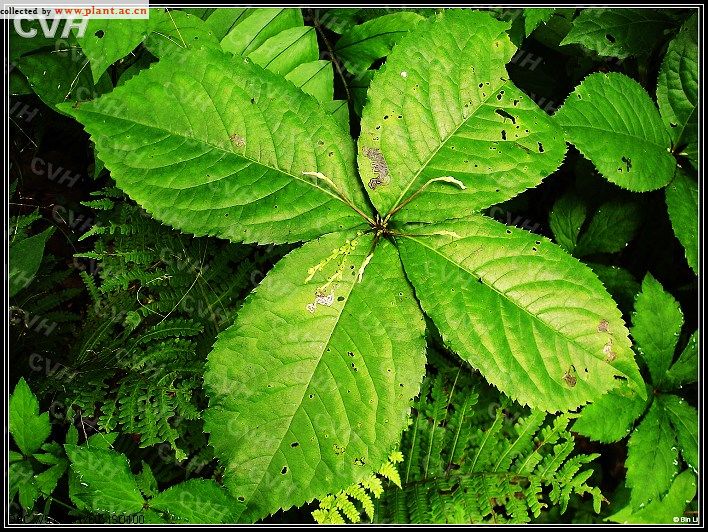
Chloranthus Henryi Hemsl. var. hupehensis (Pamp.) K.F.Wu
- Introduction
- Download
Blast
Chloranthus Henryi Hemsl. var. hupehensis (Pamp.) K.F.Wu Leaf blade obovate or suborbicular, glabrous, margin coarsely crenate. It has been used as a folk medicine to promote blood circulation and reduce swelling.
Year:2016
Institution:South China Botanical Garden, Chinese Academy of Sciences
Yunnan Agricultural University
Material: Guangzhou, China
Data link: http://www.herbal-genome.cn/index.php?m=content&c=index&a=show&catid=100&id=31
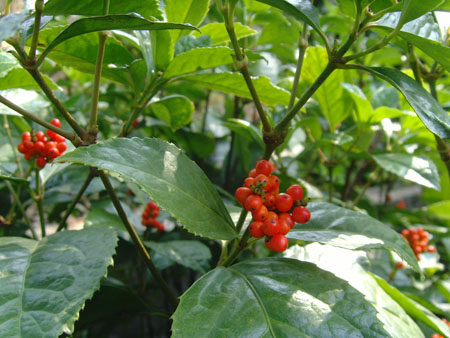
Sarcandra glabra
- Introduction
- Download
Blast
Sarcandra glabra is a medicinal herb that mainly grows in the south of China. The whole S. glabra plant and its water extract have been listed in the Chinese Pharmacopoeia, are mainly used to treat inflammation and immune-related diseases such as acute respiratory infections, thrombocytopenia, pneumonia, cellulitis, appendicitis, shigellosis, psoriasis, and malignancies.As one major class of ingredients group, such as Zhongjiefeng tablets and Xiekang capsules, the coumarins found in S. glabra, such as isofraxidin, esculetin and scoparone, were reported to be anti-inflammatory ingredients.
1
Year:2016
Institution:South China Botanical Garden, Chinese Academy of Sciences
Yunnan Agricultural University
Material: Guangzhou, China
2
Year:2016
Institution:South China Botanical Garden, Chinese Academy of Sciences
Yunnan Agricultural University
Material: Guangzhou, China
Data link: http://www.herbal-genome.cn/index.php?m=content&c=index&a=show&catid=100&id=30
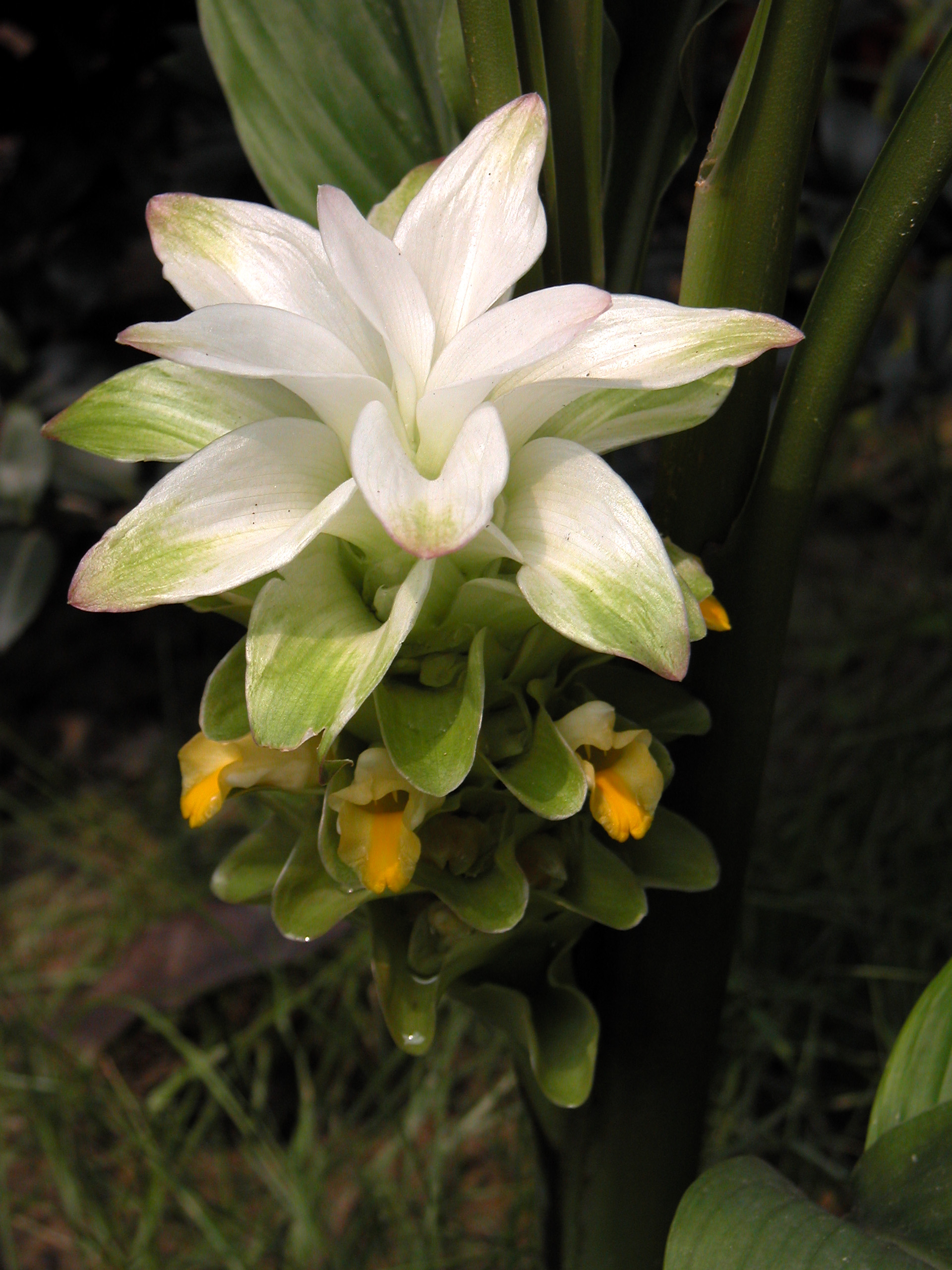
Curcuma aromatica Salisb.
- Introduction
- Download
Blast
Curcuma aromatica Salisb.The rhizomes of C. aromatic possess a reputed property to promote health conditions by arresting ageing and have immunomodulatory effects. From ancient times, it is being used as an antibiotic against various microbial infections. Historically, rhizomes are used as tonic, carminative, and externally in combinations with astringents, bitters and aromatics to bruises, in sprains and in snake-bite. They are also used for skin eruptions and infections and to improve complexion. C. aromaticahas been reported to exert various medicinal activities such as promoting blood circulation to remove blood stasis and for the treatment of cancer.
Year:2016
Institution:South China Botanical Garden, Chinese Academy of Sciences
Yunnan Agricultural University
Material: Guangzhou, China
Data link: http://www.herbal-genome.cn/index.php?m=content&c=index&a=show&catid=100&id=29
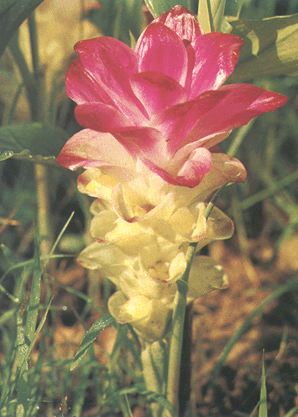
Curcuma longa L
- Introduction
- Download
Blast
Curcuma longa L. plants ca. 1 m tall. Rhizomes many branched, orange or bright yellow, cylindric, aromatic; roots tuberous at tip. The plants exhibit anti-inflammatory, anti-human immunodeficiency virus, anti-bacteria, antioxidant effects and nematocidal activities.
Year:2016
Institution:South China Botanical Garden, Chinese Academy of Sciences
Yunnan Agricultural University
Material: Guangzhou, China
Data link: http://www.herbal-genome.cn/index.php?m=content&c=index&a=show&catid=100&id=28
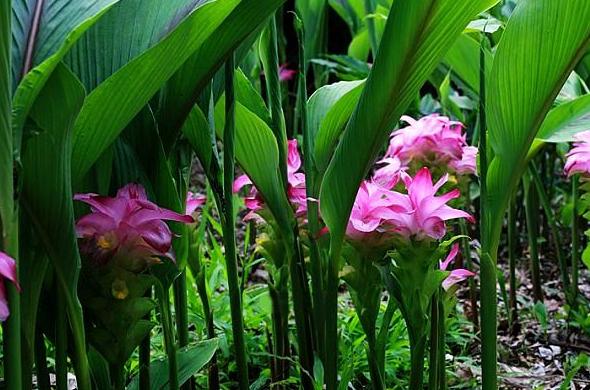
Curcuma zedoaria (Christm.) Rosc.
- Introduction
- Download
Blast
Curcuma zedoaria (Berg.) Rosc. (Zingiberaceae), also called Er-chu in Chinese, has long been used as a folk medicine. Traditionally, the dried rhizome of C. zedoaria is selected to make drinks or to be extracted as medicine. It has been reported that the boiling water extracts of C. zedoaria had a moderate antimutagenic activity against benzo[a]pyrene. Some hepatoprotective sesquiterpenes have been isolated from the aqueous acetone extracts of C. zedoaria rhizome. The major sesquiterpene compounds, including furanodiene, germacrone, curdione, neocurdione, curcumenol, isocurcumenol, aerugidiol, zedoarondiol, curcumenone and curcumin, were found to show potent protective effect on d-galactosamine/lipopolysaccharide-induced liver injury in mice.
Year:2016
Institution:South China Botanical Garden, Chinese Academy of Sciences
Yunnan Agricultural University
Material: Guangzhou, China
Data link: http://www.herbal-genome.cn/index.php?m=content&c=index&a=show&catid=100&id=27

Spatholobus suberectus Dunn
- Introduction
- Download
Blast
Spatholobus suberectus (Chinese name Ji Xue Teng), is a common traditional Chinese herb applied in cancer treatment. Chinese Medicine considers cancer as a kind of disease with severe blood stasis. Therefore the promotion of blood circulation and oxygen supply is an important strategy for cancer therapy.
Year:2016
Institution:South China Botanical Garden, Chinese Academy of Sciences
Yunnan Agricultural University
Material: Guangzhou, China
Data link: http://www.herbal-genome.cn/index.php?m=content&c=index&a=show&catid=100&id=21

Sophora tonkinensis Gagnep
- Introduction
- Download
Blast
Sophora tonkinensis (Leguminosae) is an important traditional Chinese herbal plant, namely Shan-Dou-Gen in Chinese. Its roots and rhizomes were used for the treatment of acute pharyngolaryngeal infections and sore throats. Phytochemical investigations have revealed that the plant accumulated lupin alkaloids and flavones as its main constituents. Cytisine-type alkaloids are a class of natural occurring lupin alkaloids that exhibit partial agonist activity toward neuronal nicotinic acetylcholine receptors with specificity for the α4β2 subtype.
Year:2016
Institution:South China Botanical Garden, Chinese Academy of Sciences
Yunnan Agricultural University
Material: Guangzhou, China
Data link: http://www.herbal-genome.cn/index.php?m=content&c=index&a=show&catid=100&id=22

Glycyrrhiza uralensis
- Introduction
- Download
Blast
Glycyrrhiza uralensis, also known as Chinese liquorice, is a flowering plant native to Asia, which is used in traditional Chinese medicine.As well as traditional Chinese medicine, liquorice root is used in Greco-Arab and Unani medicines, as well as in the traditional medicines of Mongolia, Japan, Korea, Vietnam, Pakistan, India and other Asian nations. People with heart conditions or high blood pressure should avoid ingesting extensive amounts of liquorice, as it can further heighten blood pressure and lead to stroke.
1
Year:2013
Institution:RIKEN Center for Life Science Technologies (Division of Genomic Technologies), RIKEN Yokohama Institute
Material: Hei longjiang, China
2
Year:2015
Institution:State Key Laboratory of Tree Genetics and Breeding, The Research Institute of Forestry, Chinese Academy of Forestry, Centre for Comparative Genomics, Murdoch University
Material: Beijing, China
Data link: http://www.herbal-genome.cn/index.php?m=content&c=index&a=show&catid=100&id=23
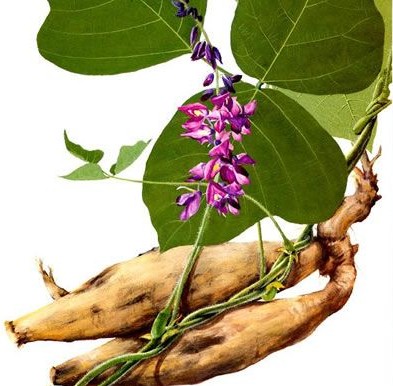
Pueraria lobata
- Introduction
- Download
Blast
Pueraria lobata, a member of the Leguminosae family, is a traditional Chinese herb which has been used since ancient times. P. lobata root has extensive clinical usages, because it contains a rich source of isoflavones, including daidzin and puerarin. P. lobata roots have been widely used for the medical treatments of alcohol-induced hangover, alcoholism, circulatory problems, and chest pains.
Year:2015
Institution:CAS Key Laboratory of Plant Germplasm Enhancement and Specialty Agriculture, Wuhan Botanical Garden, Chinese Academy of Sciences
Material: Wuhan, China
Data link: http://www.herbal-genome.cn/index.php?m=content&c=index&a=show&catid=100&id=24

Cassia angustifolia Vah L.
- Introduction
- Download
Blast
Senna (Cassia angustifolia Vahl. is synonymous with Senna alexandria Mill.), popular as “Tirunelveli senna” is used worldwide as natural laxative. The drug senna is mentioned in various texts of indigenous systems of medicine (Ayurveda, Siddha Unani and Homoeopathy) in India, pharmacopeias of United States, United Kingdom, Germany, and other counties
Year:2015
Institution:ICAR-Directorate of Medicinal and Aromatic Plants Research (DMAPR), Anand, Gujarat, India
Material: Anand, Gujarat
Data link: http://www.herbal-genome.cn/index.php?m=content&c=index&a=show&catid=100&id=25